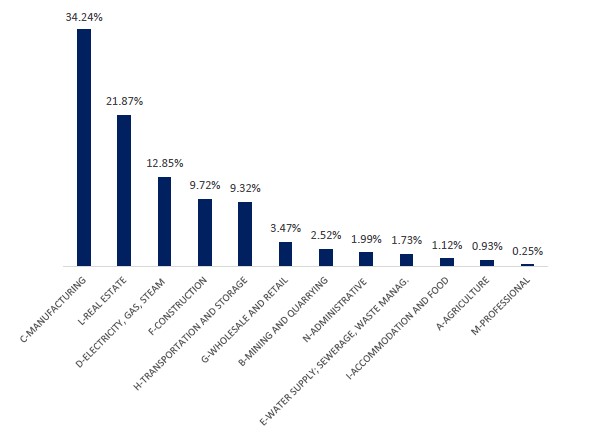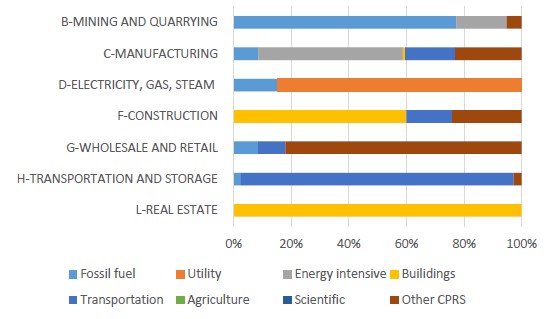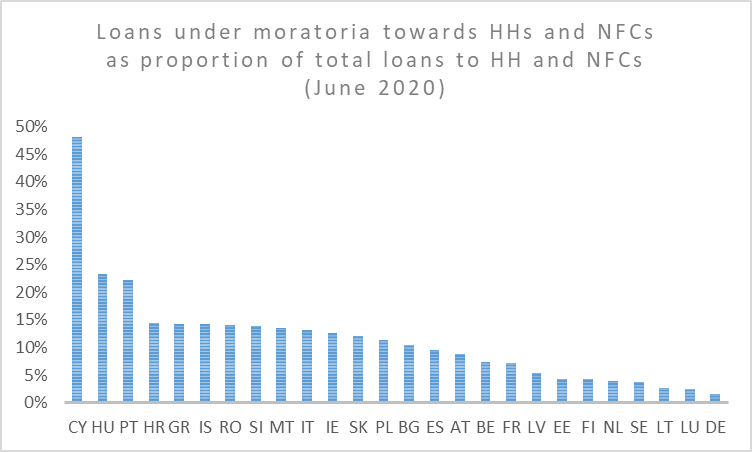Authors
José Manuel Mansilla-Fernández
This journal section indicates a few briefly commented references that a non-expert reader might want to cover to obtain a first informed and broad view of the theme discussed in the current issue. These references are meant to provide an extensive, though not exhaustive, insight into the main topics of the debate. More detailed and specific references are available in each article published in the current issue.
On the functioning of Open Banking
Banking institutions allow access to their data through application programming interfaces (APIs hereafter) to third-party services providers (TSPs hereafter) to create new services, analytics, and financial products to improve customers’ services. In this regard, Open Banking is thought to support customer requirements and TSPs innovation to identify further customers’ needs and accelerate financial inclusion. The critical point is to preserve the privacy of depositors, borrowers, investors, and other types of personal information (PI). When disclosing APIs to TSPs, financial institutions might be afraid due to possible attacks to their customers by malicious software (Liao et al., 2022).
Notably, APIs can be defined as mechanisms through which computers communicate with each other using common languages. Software systems operate among themselves through standardized protocols and standard interfaces (Cowhey et al., 2009). In this regard, APIs enable such interfaces to communicate with one another, making information and contents approachable (Bodle, 2011). Furthermore, APIs technologies reduce abstraction and complexity, allowing API-consuming systems to communicate without previous conditions regarding the origin of the applications (Zachariadis and Ozcan, 2017).
Interestingly, the banking industry is experiencing a process of platformization, in which technology is used to connect people, organisations and resources in an interactive ecosystem (Parker et al, 2016; Van Dijck et al., 2014, 2018). Formally speaking, Open Banking, has been expanded worldwide, and it has become one of the most prominent strengths of the banking industry (Brackert et al., 2019; Ziegler, 2021). The cornerstone of Open Banking is to ensure sharing, provided there is consent. Interestingly, despite this simple process, data-sharing rights might be the main limitation for fostering the revolution of the banking industry from the conventional business models to ‘open platforms’, as happened in other industries such as the telecommunication sector (Babina et al., 2022; Westermeier, 2020). Indeed, platform-business models might have repercussions on competition since they rely on network externalities, as further discussed in the next section (Barba Navaretti et al., this issue).
Open Banking encourages innovation between financial institutions and TSPs. Consequently, customers’ account transactions are regarded as ‘banks’ assets’, but Open Banking allows customers to share their information with other TSPs through APIs (Almehrej, et al., 2020). Interestingly, the Open Banking Implementation Entity (OBIE) aimed to develop APIs standards for Open Banking in the UK. The OBIE requires British banks to verify TSPs (consent) access to users’ data. Liao et al. (2022: 451) identify the following three phases to implementing Open Banking:
- Requiring public information about time deposit interests, currency exchange, and mortgage interest rates. This information, which banks must post, must be verifiable by users.
- TSPs will access users’ data to supply integrated account services. This phase focuses on customers’ information, e.g., their deposits, credit, and investments for multiple banks integrated into a single set.
- Lastly, users can link payments and funds among different sources via ATP-providers Apps. This phase focuses on transaction information about loan repayments, authorisations, and several types of transactions.
An essential issue in Open Banking is that of security and data protection. Interestingly, blockchains which distribute digital blocks containing cryptographic linking information, can help protect customers’ privacy, ensure the safety of transactions, and provide safe scenarios, particularly for third parties (Chen et al., 2016; Chiu et al., 2021).[1]An example is Ethereum blockchain platform is an example of smart-contact (SC hereafter), which might improve control over customers’ changes of authorisations (Liao et al., 2022). Wang et al. (2020) assess methodologies employed to classify data privacy and ‘disclosure schemes’ for protecting customers’ privacy, which must concord with possible deficiencies in Open Banking blockchain, e.g., privacy-preserving granularity, over-complexities of banking subsystems, or hierarchical data management. Mukhopadhyay and Ghosh (2021), based on a systematic customer consent management analysis, set up a TPST classification to facilitate customers making consent decisions. Noting that private information has higher standards of authentication and requirements, Xu et al. (2020) built a considerable data-sharing model to ease banks and customers access to TSP information. Based on an analysis of security risks, Zhang et al. (2019) propose a data-sharing scheme and API agreement to safeguard APIs from malware. Likewise, Dong et al. (2020) describe that a blockchain-based SSI model wbhci might be able to address data privacy issues, involving registry and controlling contracts to enhance user identity changes.
The impact of Open Banking on competition
Economic literature usually compares traditional banks and FinTech companies when competing.
He et al. (2022a,b,) develop a model in which Open Banking may enhance credit competition between banks and FinTech companies by augmenting banks’ and FinTechs’ efficiency in screening borrowers. Accordingly, customers with higher creditworthiness will have better access to credit than those relatively worse classified. A key element of Open Banking is that customers keep control of the data they are willing to share with third-parties, which can reveal information about their creditworthiness. Lastly, Open Banking can disclose non-financial information about (FinTech) lenders. Nonetheless, little is known about how FinTechs can make relatively more targeted credit offers which can impact competition.
The irruption of FinTech (e.g., Vives, 2019) changed the sources of information production and diffusion.[2]The term Open Banking refers to data sharing of customers’ information that banks possess with the so-called ‘third-party’ (See Instititution in this issue), whereas the concept of FinTech … Continue reading Berg et al. (2020, 2021) show that digital footprints – which refers to the trail of data that a person leaves on the Internet, including visits to websites, emails, etc. – might be a valuable tool to predict consumers’ default and it might be a complementary source to traditional credit agencies. Similarly, Fuster et al. (2019) assess the mortgage credit market and show that FinTech lenders’ advantages from technology augment their origination efficiencies. Remarkably, Di Maggio and Yao (2021) show that FinTech lenders grant to borrowers of relatively better creditworthiness by financing consumer credit, who later on default ex post more frequently than similar borrowers applying to other lenders. Di Maggio et al. (2022) suggest that some borrowers wishing immediate consumption apply to FinTechs, thus exacerbating their self-control issue over overborrow.
Focusing explicitly on Open Banking, Parlour et al. (2022) investigate the case of a bank operating in both payments and credit markets. The authors assume that the bank is a monopolist in the credit market but competing with another stand-alone FinTech on payment services. A crucial assumption is that customers’ payment services provide information about their creditworthiness. Within this framework, customers might anticipate that changing their payment service to FinTech might impact their credit service. Notwithstanding, there is no implication on the equilibrium of credit quality.
On the empirical side, Buchak et al. (2018) investigates the mortgage market and explain that advances in banking regulation significantly contributed to growing FinTechs. Besides, Tang (2019) introduces a regulatory ‘shock’ that shortens bank credit to find that peer-to-peer (P2P) platforms can substitute banks in the consumer credit segment. On th supply side, Feyen et al. (2022c) conducted a survey that reveals that banks and Fintechs do not see each other as competitors. Likewise, Fintech firms expect to compete with their counterparts like BigTechs, platforms, or aggregators; whereas banks see neo-banks as their competitors. However, economies of scale and network economies are expected to consolidate large multi-product institutions, e.g., large banks, FinTechs, and BigTechs (Feyen et al., 2022a,b).
Babina et al. (2022) recently studied open banking using a handful of data sources, including hand-collected data. Their findings show little effect of open banking on competition in the banking sector. They provide two main explanations of this result. First, the phenomenon of OB is still embryonic and data are not entirely reliable. Second, real effects can take a while to be visible substantially. Interestingly, they find that Open Banking might reduce adverse selection against new entrants and augment formers’ product quality. Consequently, Open Banking fosters innovation. These results suggest two interesting areas for policymakers. First, Open Banking diminishes banks’ incentives to generate value by capturing customers’ data. Secondly, ‘data sharing’ hurt customers who opt-out from sharing might be harmed since they might be perceived as credit-worthless borrowers, i.e., they are sending negative signals to the market. Consequently, the effects can be unpredictable because Open Banking data can be used to screen potential renters and customers who are unwilling to share information about their levels of risk, thus being removed from ‘basic housing markets’.
Financial inclusion and consumer protection
Financial inclusion can be defined as a measure of the degree to which individuals and companies can access financial services. The maintained assumption is that financial inclusion can substantially improve people’s well-being. Digital financial services might offer important opportunities for inclusion and resilience. In this regard, financial literacy and digital skills play an important role in correctly managing the aforementioned financial applications from a young age (Bianco et al., 2022).
The economic literature suggests that the market equilibrium depends on the context of consumer privacy preferences. Jones and Tonetti’s (2020) theoretical model shows that consumers’ data ownership frequently leads to broader data management than firm ownership, thus enhancing welfare due to the non-rivalry of such usage. Likewise, Ichihashi (2020) shows that sellers might use consumers’ information, particularly when revealing their preferences, to recommend specific products and implement price discrimination, the so-called multi-product monopoly. More precisely, they show that the seller is incentivized not to discriminate consumers in price to encourage consumers to share their information, but it harms consumers in equilibrium since firms might set constant prices anticipating the clearing of the market. Similarly, Ali et al. (2022) find that sharing information about preferences with firms might amplify price competition and benefit consumers. Interestingly, Liu et al. (2020) analyze the implications of consumers’ privacy when introducing a ‘consumption good’ and a ‘temptation good’. Data sharing might manipulate consumers’ behaviour, improving the efficiency of the ‘consumption good’, but inducing behaviorally biased consumption towards the ‘temptation good’. In particular, Ali et al. (2022) emphasize differences between the EU consumer privacy regulation, namely General Data Protection Regulation (preferred opt-out choice), and the California Consumer Privacy Act (opt-in preferred choice) (see also Kshetri and Voas, 2020).
References
Ali, S.N., Lewis, G., and Vasserman, S. (2022). Voluntary Disclosure and Personalized Pricing, The Review of Economic Studies, forthcoming.
Almehrej A., Freitas L., Modesti P. (2020). Security analysis of the open banking account and transaction API protocol. arXiv preprint arXiv:2003.12776
Babina, T., Buchak, G., and Gornall, W. (2022). Customer data access and Fintech entry: Early evidence from open banking. Stanford University Graduate School of Business Research Paper , Available at SSRN: https://ssrn.com/abstract=4071214 or http://dx.doi.org/10.2139/ssrn.4071214
Berg, T., Burg, V., Gombović, A., and Puri, M. (2020). On the rise of fintechs: Credit scoring using digital footprints. Review of Financial Studies, 33: 2845-2897.
Berg, T., Fuster, A., and Puri, M. (2021). Fintech lending, Discussion paper National Bureau of Economic Research.
Bianco, M., Marconi, D., Romagnoli, A., and Stacchini, M. (2022). Challenges for financial inclusion: the role for financial education and new directions. Questioni di Economia e Finanza (Occasional Papers) 723, Bank of Italy, Economic Research and International Relations Area. Available at: https://www.bancaditalia.it/pubblicazioni/qef/2022-0723/QEF_723_22.pdf
Bodle, R. (2011). REGIMES OF SHARING, Information, Communication & Society, 14: 320-337.
Brackert T, Chen C, Colado J, Desmangles L, Dupas M, Roussel P. The race for relevance and scale. Boston Consulting Group; 2019 [cited 2022 Sep 17]. Available from: https://www.bcg.com/publications/2019/global-retail-banking-race-for-relevance-scale.
Buchak, G, Matvos, G., Piskorski, T., and Seru, A. (2018). Fintech, regulatory arbitrage, and the rise of shadow banks, Journal of Financial Economics, 130: 453-483.
Chen M., Qian Y., Chen J., Hwang K., Mao S., and Hu L. (2016). Privacy protection and intrusion avoidance for cloudlet-based medical data sharing. IEEE Transition on Cloud Computing.
Chiu W.-Y., Meng W., and Jensen C.D. (2021). My data, my control: A secure data sharing and access scheme over blockchain. Journal of Information Security and Applications, 63, Article 103020
Cowhey, P. F., Aronson, J. D. and Abelson, D. (2009) Transforming Global Information and Communication Markets: The Political Economy of Innovation, Cambridge, MA: The MIT Press.
Daiy A.K., Shen K.-Y., Huang J.-Y., and Lin T.M.-Y. (2021). A hybrid MCDM model for evaluating open banking business partners. Mathematics, 9: 587.
Di Maggio, M., and Yao, V. (2021). Fintech borrowers: Lax-screening or cream-skimming? The Review of Financial Studies, 34: 4565-4618.
Di Maggio, M., Ratnadiwakara, D., and Carmichael, D. (2022). Invisible primes: Fintech lending with alternative data. NBER Working Paper 29840. DOI: 10.3386/w29840.
Dong C., Wang Z., Chen S., and Xiang Y. (2020). BBM: A blockchain-based model for open banking via self-sovereign identity. International Conference on Blockchain, Springer: 61-75.
Feyen, E.H.B., Frost, J., Gambacorta, L., Natarajan, H., and Saal, M. (2022a). Fintech and the Digital Transformation of Financial Services – Implications for Market Structure and Public Policy (English). Washington, D.C. : World Bank Group. Available at: http://documents.worldbank.org/curated/en/099735304212236910/P17300608cded602c0a6190f4b8caaa97a1
Feyen, E.H.B.; Natarajan, H., and Saal, M.(2022b). Fintech and the Future of Finance – Overview (English). Washington, D.C. : World Bank Group. Available at: http://documents.worldbank.org/curated/en/099450005162250110/P17300600228b70070914b0b5edf26e2f9f
Feyen,E.H.B.; Natarajan, H., Heffernan, R.P., Saal, M., Sarkar, A. (2022c). World Bank Group Global Market Survey : Digital Technology and the Future of Finance (English). Washington, D.C. : World Bank Group.Available at: http://documents.worldbank.org/curated/en/099735404212273637/P1730060bfa4c60010b833091f0f2fe2fc8
He, Z., Huang, J., and Zhou, J. (2022a). Open banking: Credit market competition when borrowers own the data. Mimeo. Available at: https://cpb-us-w2.wpmucdn.com/voices.uchicago.edu/dist/6/2325/files/2022/08/Open-Banking_20220726.pdf
He, Z., Sheila J., Xu, D., and Yin, X. (2022b). Investing in lending technology: It spending in banking, University of Chicago, Becker Friedman Institute for Economics Working Paper.
Ichihashi, S. (2020). Online privacy and information disclosure by consumers. American Economic Review, 110: 569-595.
Jones, C.I., and Tonetti, C. (2020). Nonrivalry and the economics of data. American Economic Review, 110: 2819-2858.
Kshetri, N., and J. Voas, J. (2020). Thoughts on General Data Protection Regulation and Online Human Surveillance. IEEE Computer, 53: 86-90.
Liao, C.-H., Guan, X.-Q., Chen, J.H., and Yuan, S.-M. (2022). Blockchain-based identity management and access control framework for open banking ecosystem. Future Generation Computer Systems, 135: 450-466.
Liu, H.-W. (2020). Two decades of laws and practice around screen scraping in the common law world and its open banking watershed moment. Washington International Law Journal, 30: 28-62.
Mukhopadhyay I., and Ghosh A. (2021). Blockchain-based framework for managing customer consent in open banking. The Essence of Network Security: An End-to-End Panorama, Springer: 77-90.
Parlour, C., Rajan, U., and Zhu, H. (2022). When fintech competes for payment flows, Review of Financial Studies, 35: 4985-5024.
Rajan, R.G. (1992). Insiders and outsiders: The choice between informed and arm’s-length debt. Journal of finance 47: 1367–1400.
Tang, H. (2019). Peer-to-peer lenders versus banks: Substitutes or complements?, Review of Financial Studies, 32: 1900-1938.
Thakor, A.V. (1996). Capital requirements, monetary policy, and aggregate bank lending: theory and empirical evidence. Journal of Finance, 51: 279–324.
van Dijck, J. (2014). Datafication, dataism and dataveillance: Big data between scientific paradigm and ideology. Surveillance & Society, 12: 197–208.
van Dijck, J., Poell, T., and de Waal, M. (2018). The platform society: Public values in a connective world. Oxford University Press.
Wang H., Ma S., Dai H.-N., Imran M., and Wang T. (2020). Blockchain-based data privacy management with nudge theory in open banking. Future Generation Computer Systems, 110: 812-823
Westermeier, XC. (2020). Money is data – the platformization of financial transactions, Information, Communication & Society, 23: 2047-2063.
Xu Z.Y., Wang Q., Wang Z.Y., Liu D.H., Wen S., and Hanson R. (2020). PPM: A provenance-provided data sharing model for open banking via blockchain. Proceedings of the Australasian Computer Science Week Multiconference, ACSW 2020.
Zachariadis, M., and Ozcan, P. (2017). The API Economy and Digital Transformation in Financial Services: The Case of Open Banking. SWIFT Institute Working Paper No. 2016-001, Available at SSRN: https://ssrn.com/abstract=2975199 or http://dx.doi.org/10.2139/ssrn.2975199
Zhang Q., Zhu J., and Ding Q. (2019). OBBC: A blockchain-based data sharing scheme for open banking. CCF China Blockchain Conference, Springer: 1-16.
Ziegler T. (2021). Implementation of open banking protocols around the world. In: Rau R, Wardrop R, Zingales L, editors. The Palgrave Handbook of Technological Finance. Cham: Springer International Publishing: 751–779.
Ziegler, T. (2021). Implementation of Open Banking Protocols Around the World, p. 751-779, Springer.
Footnotes
| ↑1 | An example is Ethereum blockchain platform is an example of smart-contact (SC hereafter), which might improve control over customers’ changes of authorisations (Liao et al., 2022). |
|---|---|
| ↑2 | The term Open Banking refers to data sharing of customers’ information that banks possess with the so-called ‘third-party’ (See Instititution in this issue), whereas the concept of FinTech focusses on the (Internet-based) technology (see Institutions of the 2017.2 issue of European Economy) that might allow lenders and/or ‘third parties’ to process the aforementioned customers’ information. |






























